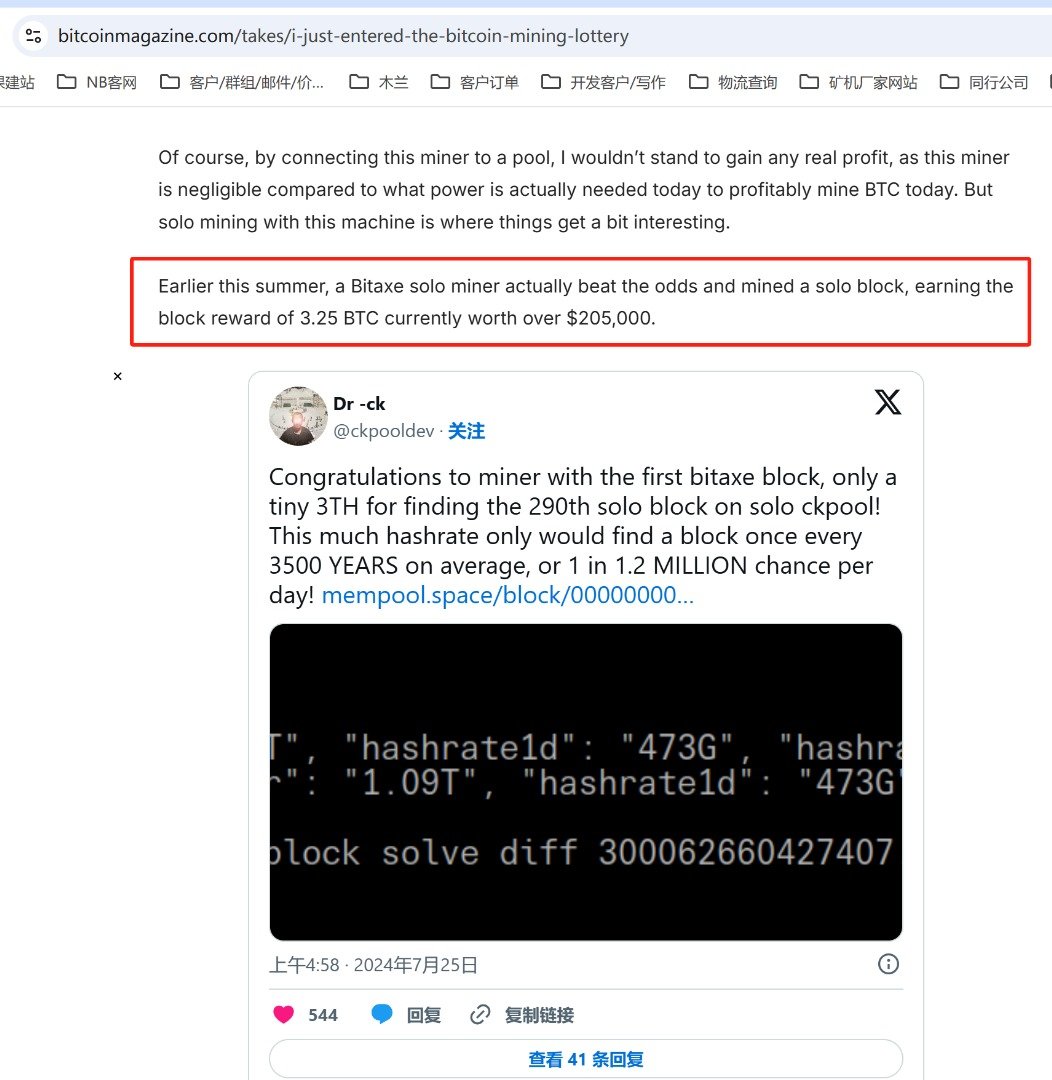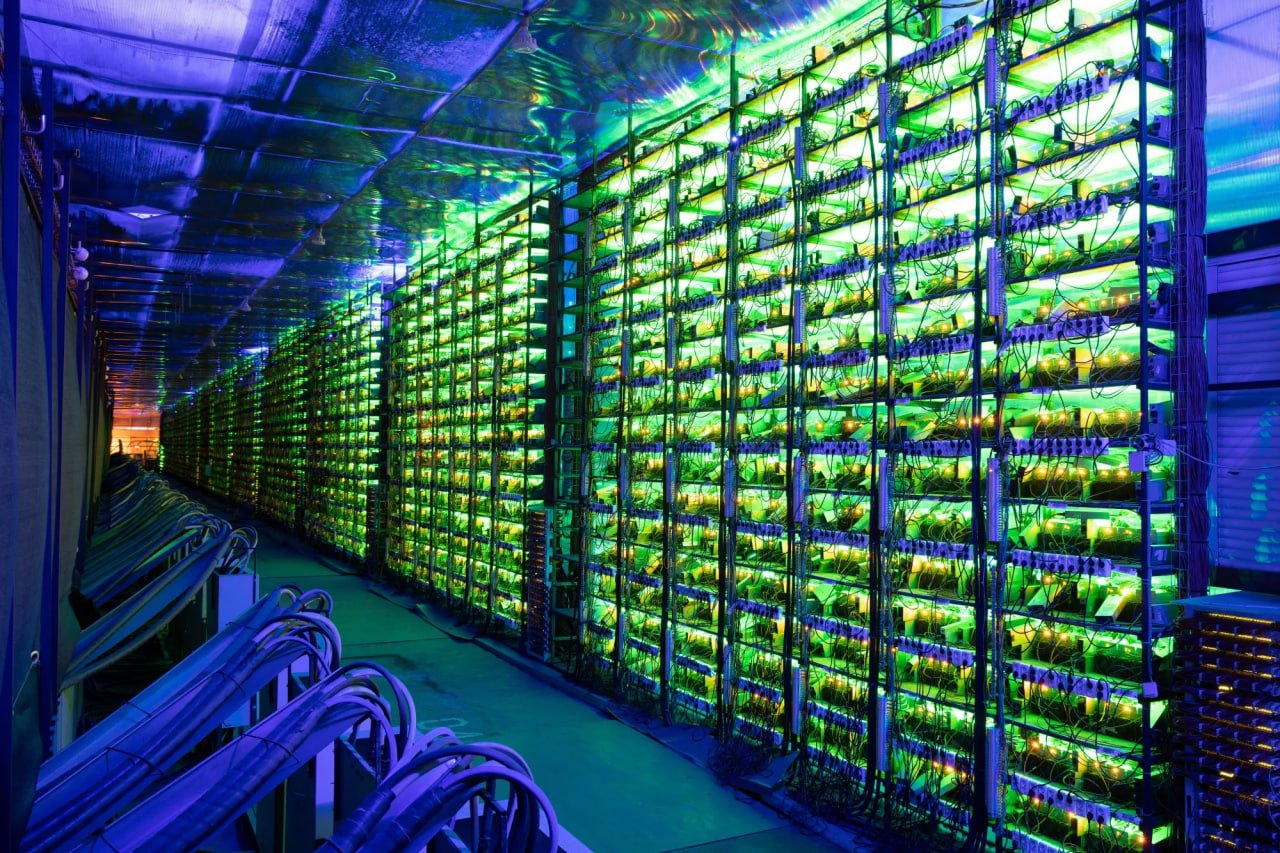What is solo Bitcoin mining and how does it work?
Solo mining sounds simple. You mine alone and keep the whole reward.
In solo mining, one miner tries to solve the block independently and keeps the full 3.25 BTC reward. According to Bitcoin Magazine, in 2024, a lucky miner mined 3.25 Bitcoins using a Bitaxe Solo mining machine.

You’ll need high hash power, stable internet, and a private node. I once tried solo mining for three months — not a single block was found. It’s like buying one lottery ticket every day and hoping for the jackpot.
What does solo mining require?
When it comes to solo mining, your hardware choice matters. There are two main categories based on power, size, and performance:
🧱 Type 1: High-Hashrate ASIC Miners
These are powerful, energy-hungry machines built for serious solo miners. Examples include:
🧊 Type 2: Low-Power Bitaxe Miners
These are compact, low-watt miners made for home use or hobbyists. Examples include:
🔍 Quick Comparison Table
| Feature | ASIC Miners (S21 / M61) | Bitaxe Miners (601 / GT) |
|---|---|---|
| Hashrate | 200–216 TH/s | 1.2–2 TH/s |
| Power Draw | 3200–3500W | 10–25W |
| Efficiency | 16–18 J/TH | 10–15 W/TH |
| Daily Usage | 76.8–84 kWh | 0.24–0.6 kWh |
| Size | Large (PC-size, 10kg+) | Pocket-sized (under 300g) |
| Noise Level | 70–80 dB (very loud) | 30–40 dB (quiet, home-friendly) |
| Best For | Farms / Pro setups | Home mining / Learning |
| Cost | High ($2000–$5000) | Low ($100–$300) |
✅ Final Thoughts
- Choose an ASIC miner if you’re going all-in with proper power and cooling.
- Go with a Bitaxe miner if you’re testing the waters, mining at home, or just want a fun low-cost solo experience.
⚠️ Risk Factors
- High electricity costs with no payout
- Months without any return
- Difficulty increases = lower odds
What is a mining pool and why do miners join one?
Mining pools sound boring, but they pay — reliably.
A mining pool is a group of miners who combine hash power and share the rewards based on contribution.
When joined F2Pool after solo experience. Finally, miner was getting paid every day. Small amounts, sure. But it felt stable.
How pools calculate your earnings
💰 Common Payout Models
| Model | Description |
|---|---|
| PPS | Pay-per-share (fixed per share submitted) |
| PPLNS | Pay-per-last-N-shares (more variable) |
| FPPS | Full-pay-per-share (includes transaction fees) |
🔗 Why miners like pools
- Predictable income
- Less downtime risk
- Easier setup than solo mining
Top 5 Most Profitable ASIC Miners on F2Pool
| Miner Model | Coin | Hashrate | Power | Efficiency | Daily Earnings | Daily Cost | Daily Profit | ROI Price | Profit Margin |
|---|---|---|---|---|---|---|---|---|---|
| VolcMiner D1 Hydro | LTC | 30 GH/s | 7600W | 253 W/G | $26.69 | $10.94 | $15.75 | $0.00 | 41% |
| Antminer S21 XP Hydro | BTC | 473 TH/s | 5676W | 12.0 W/T | $18.87 | $8.17 | $10.70 | $32,966.19 | 43% |
| VolcMiner D1 | LTC | 18.5 GH/s | 4250W | 230 W/G | $16.46 | $6.12 | $10.34 | $0.00 | 37% |
| Antminer L9 | LTC | 16 GH/s | 3360W | 210 W/G | $14.23 | $4.84 | $9.39 | $0.00 | 34% |
| Antminer S21e XP Hydro | BTC | 430 TH/s | 5590W | 13.0 W/T | $17.15 | $8.05 | $9.10 | $35,716.29 | 47% |
| ElphaPex DG Hydro 1 | LTC | 20 GH/s | 6200W | 310 W/G | $17.79 | $8.93 | $8.86 | $0.00 | 50% |
What are the main pros and cons of solo mining?
Solo mining gives you full control — and full pressure.
Solo mining offers big rewards but needs powerful machines, low power costs, and a lot of patience.
I loved the idea of keeping 100% of the reward. But it became stressful. Waiting weeks or months with nothing to show? Not worth it for small farms.
The truth behind “full reward”
✅ Pros
- Full 3.125 BTC if successful
- No pool fees
- Full control of block data
❌ Cons
- High variance and risk
- Requires expert setup
- Often zero income for months
🏠 Best Solo Bitcoin Mining Machines for Home Use (2025)
Solo Bitcoin mining from home is no longer just a dream — with efficient, compact miners hitting the market, it’s now possible to participate with limited power and space. Below are four popular models among hobbyist solo miners in 2025.
📊 Machine Comparison Table
| Miner Model | Hashrate | Power Draw | Efficiency | Noise Level | Dimensions (mm) | Est. Daily Revenue* | Price (USD) | Best For |
|---|---|---|---|---|---|---|---|---|
| Bitaxe 601 | 1.2 TH/s | 12W | 0.014j/Gh | 30–40 dB | 100 x 70 x 35 | ~ | $129–180 | Beginners / Learners |
| Avalon Nano 3S | 6 TH/s | 140W | 0.035j/Gh | 45–50 dB | 155 x 100 x 95 | ~ | ~$299 | Low-noise solo mining |
| Avalon Mini 3 | 37.5 TH/s | 800W | 0.021j/Gh | 55 dB | 297 x 192 x 292 | ~$0.35 | ~$899 | Quiet, high hash power |
| Avalon Q | 90 TH/s | 800~1600W | 0.019j/Gh | 60 dB | 350 x 196 x 293 | ~$1.2 | ~$1,999 | Pro-level solo setup |
💡 *Estimated daily revenue is calculated based on current BTC network difficulty and $70,000 BTC price as of April 2025. Real earnings vary by luck, pool fee (if any), and electricity costs.
🔍 Key Differences Explained
- Bitaxe 601: Best for learning, testing, and education. Very low power use and almost silent, but extremely low hashrate.
- Avalon Nano 3S: Entry-level device with a decent 6 TH/s performance. It’s small, quiet, and perfect for indoor mining.
- Avalon Mini 3: Great balance between size, power, and revenue. Works well in home environments with reliable ventilation.
- Avalon Q: The most powerful of the group, ideal for experienced solo miners who want serious hashrate in a quiet package.
✅ Summary
| Goal | Best Choice |
|---|---|
| Learning or hobby mining | Bitaxe 601 |
| Low-power solo mining | Avalon Nano 3S |
| Balanced power + performance | Avalon Mini 3 |
| Serious solo competition | Avalon Q |
What are the main pros and cons of pool mining?
Pool mining brings in less BTC — but far more peace of mind.
Pool mining gives consistent, small payouts with lower risk, making it ideal for most miners in 2025.
I’ve seen even large farms rely on pools. It’s about stability. In a tight market, cash flow matters more than big dreams.

The compromise of shared rewards
✅ Pros
- Daily payouts
- Low entry threshold
- Easy to scale
❌ Cons
- Payout fees (0.5% ~ 2%)
- No block-level control
- Earnings depend on pool uptime
Which mining method is more profitable in 2025?
That’s the million-dollar question — and it depends on your setup.
Pool mining is more profitable for 95% of miners in 2025 due to Bitcoin’s rising difficulty and tighter margins.
Unless you own thousands of ASICs and cheap power, solo mining won’t make financial sense in most cases. Even large-scale miners are teaming up with pools now.
Compare ROI models
⚖️ Solo vs Pool Profitability Example (per month)
| Setup | Solo Mining | Pool Mining |
|---|---|---|
| Hashrate | 500 TH/s | 500 TH/s |
| Power Cost | $0.04/kWh | $0.04/kWh |
| Avg. Income | $0 or $15,000 | $2,500 – $3,000 |
| Risk Level | Very High | Low |
📊 Market Trends in 2025
- Pools are getting bigger and smarter
- Network difficulty continues rising
- Solo block discovery chance is near-zero for most
Conclusion
In 2025, mining with a pool remains the smart choice for most miners. At the same time, adding a few low-power Solo miners like Bitaxe gives you a shot at hitting a six-figure solo block reward.
This way, you enjoy steady income from the pool while still having a chance at the big prize.
Not sure how to build your setup? Contact us now — we’ll help you get started!


